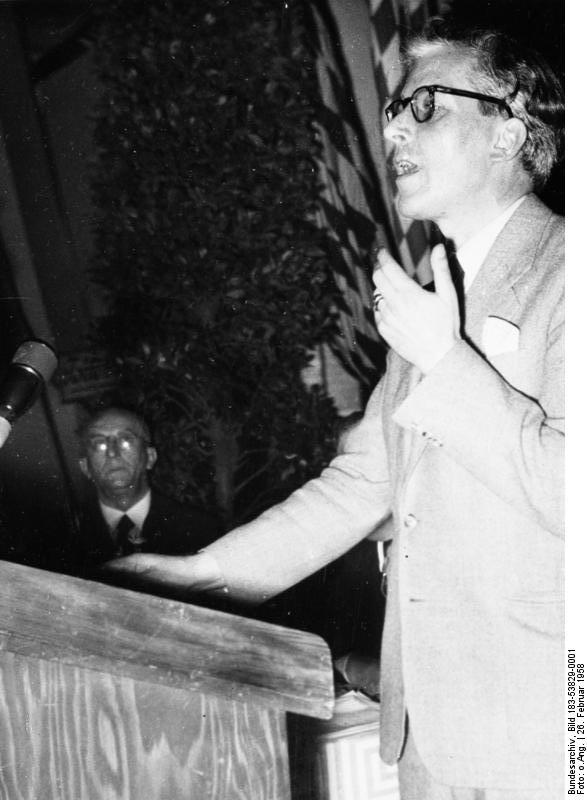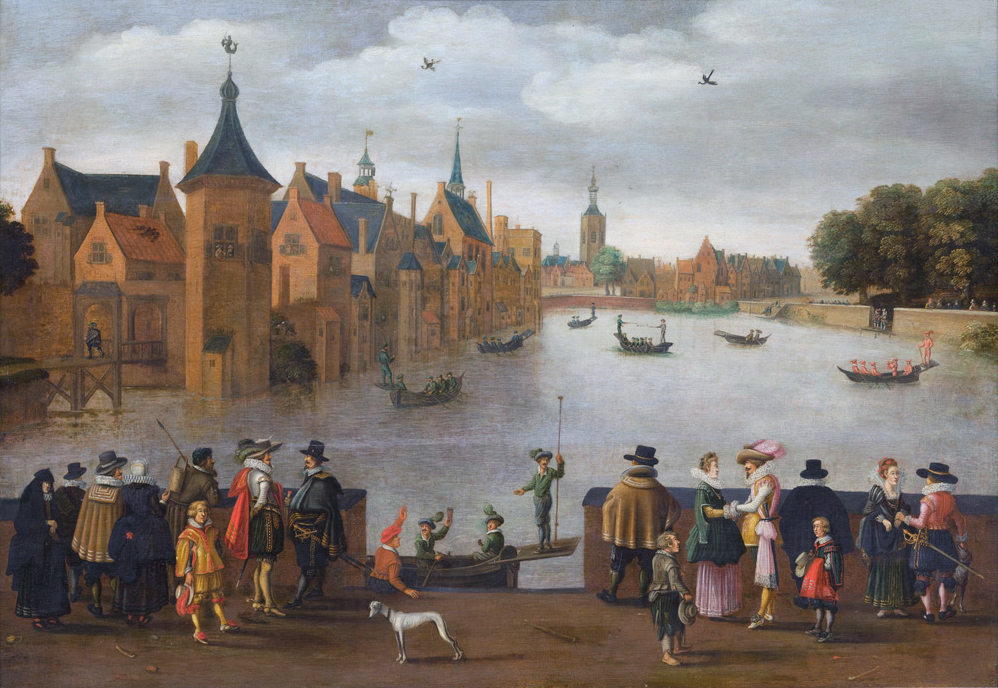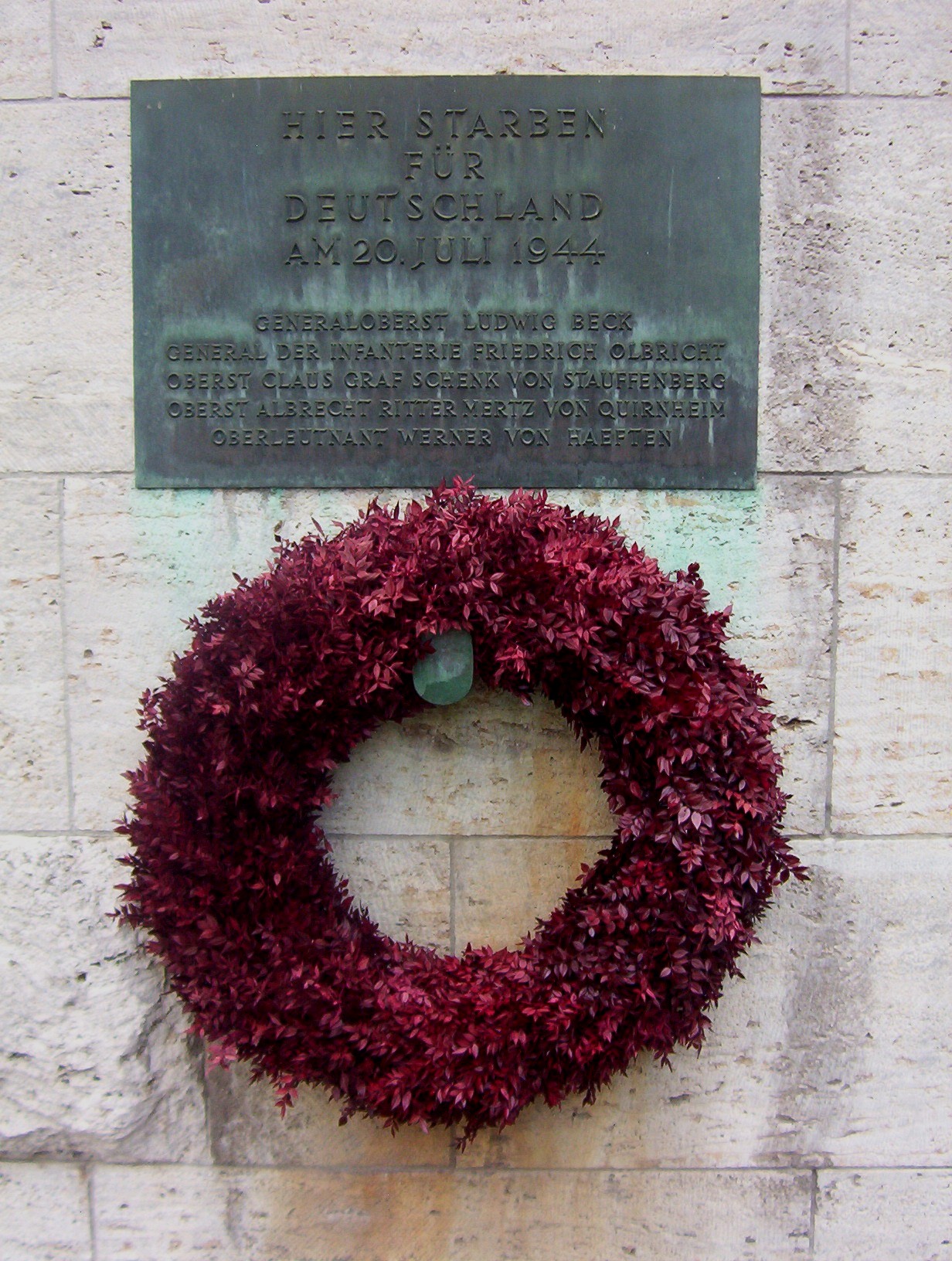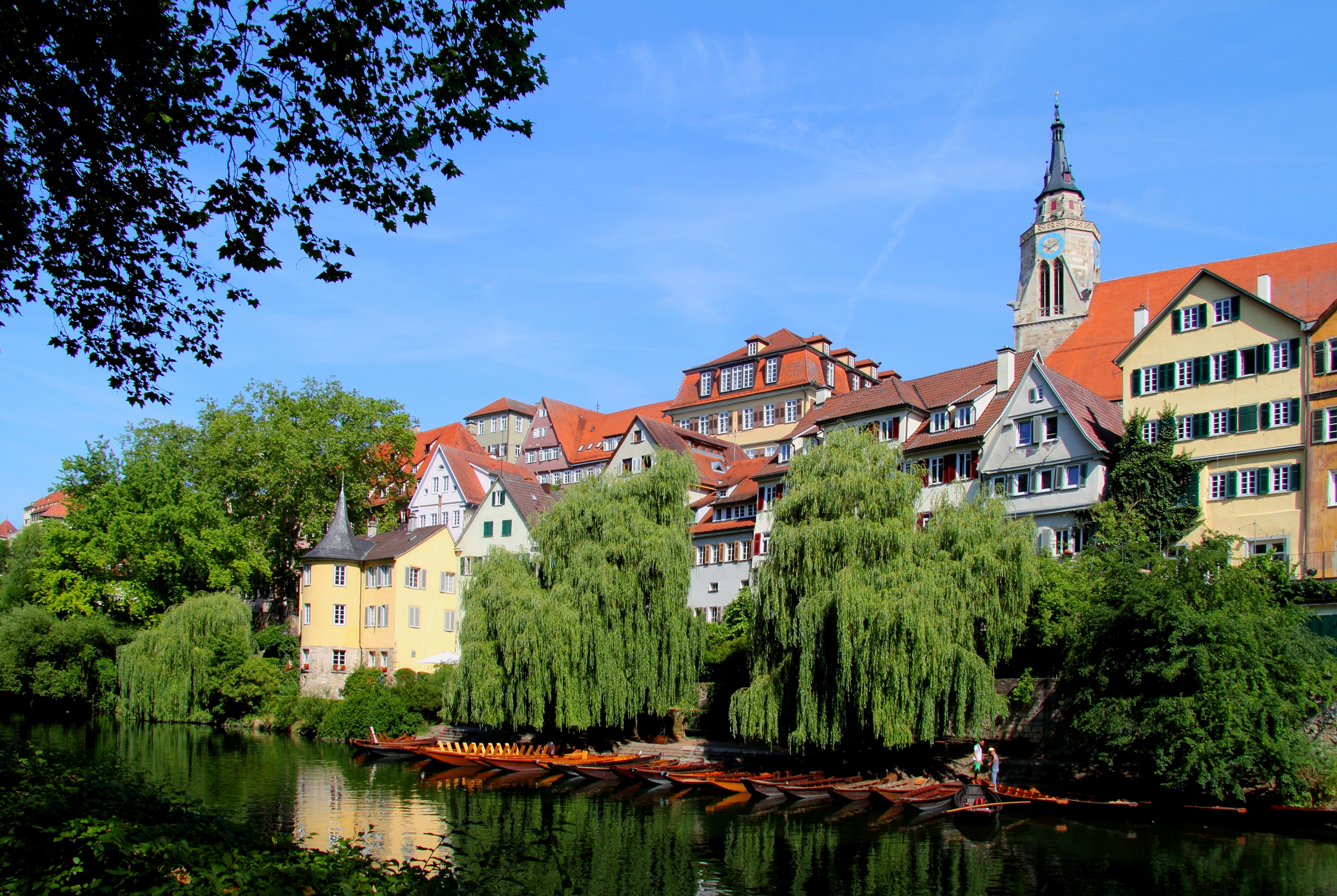|
Berthold Schenk Graf Von Stauffenberg
Berthold Alfred Maria Schenk Graf von Stauffenberg (15 March 1905, Stuttgart – 10 August 1944, Berlin- Plötzensee) was a German aristocrat and lawyer who was a key conspirator in the plot to assassinate Adolf Hitler on 20 July 1944, alongside his younger brother, Colonel Claus Schenk Graf von Stauffenberg. After the plot failed, Berthold was tried and executed by the Nazi regime. Early life Berthold was the oldest of four brothers (the second being Berthold's twin Alexander Schenk Graf von Stauffenberg) born into an old and distinguished aristocratic South German Catholic family. His parents were the last ''Oberhofmarschall'' of the Kingdom of Württemberg, Alfred Schenk Graf von Stauffenberg, and Caroline née von Üxküll-Gyllenband. Among his ancestors were several famous Prussians, including most notably August von Gneisenau. In his youth, he and his brothers were members of the ''Neupfadfinder'', a German Scout association and part of the German Youth movement. After ... [...More Info...] [...Related Items...] OR: [Wikipedia] [Google] [Baidu] |
Claus Von Stauffenberg
Colonel Claus Philipp Maria Justinian Schenk Graf von Stauffenberg (; 15 November 1907 – 21 July 1944) was a German army officer best known for his failed attempt on 20 July 1944 to assassinate Adolf Hitler at the Wolf's Lair. Despite initial support for the Nazi Party's nationalist aspects, and a tentative opposition to democracy, Stauffenberg joined the covert resistance movement within the Wehrmacht as the war continued, opposing the criminal character of the dictatorship. Alongside Major General Henning von Tresckow and General Hans Oster, Stauffenberg was a central figure in the conspiracy against Hitler within the . Shortly following the foiled Operation Valkyrie plot, he was executed by firing squad. As a military officer from a noble background, Stauffenberg took part in the Invasion of Poland, the 1941-42 Invasion of the Soviet Union in Operation Barbarossa and the Tunisian Campaign during the Second World War. Family history Stauffenberg was born in S ... [...More Info...] [...Related Items...] OR: [Wikipedia] [Google] [Baidu] |
Alexander Schenk Graf Von Stauffenberg
Count Alexander von Stauffenberg (German: ''Alexander Franz Clemens Maria Schenk Graf von Stauffenberg''; 15 March 1905, in Stuttgart – 27 January 1964, in Munich) was a German aristocrat and historian. His twin brother Berthold Schenk Graf von Stauffenberg and younger brother Claus Schenk Graf von Stauffenberg were among the leaders of the 20 July Plot against Hitler in 1944. Early life The brothers were born into the old and distinguished aristocratic South German Catholic Stauffenberg family. Their parents were the last ''Oberhofmarschall'' of the Kingdom of Württemberg, Alfred Schenk Graf von Stauffenberg, and Caroline née Gräfin von Üxküll-Gyllenband. Among Alexander's ancestors were several famous Prussians, including August von Gneisenau. His name points to the imperial Hohenstaufen mountain and castle. Alexander Schenk Graf von Stauffenberg went to school in Stuttgart and studied ancient history at the University of Heidelberg, University of Jena, Univ ... [...More Info...] [...Related Items...] OR: [Wikipedia] [Google] [Baidu] |
Wannsee
Wannsee () is a locality in the southwestern Berlin borough of Steglitz-Zehlendorf, Germany. It is the westernmost locality of Berlin. In the quarter there are two lakes, the larger '' Großer Wannsee'' (Greater Wannsee, "See" means lake) and the '' Kleiner Wannsee'' (Little Wannsee), located on the River Havel and separated only by the Wannsee Bridge. The larger of the two lakes covers an area of and has a maximum depth of . Geography Overview At the western rim of the Wannsee locality the Glienicke Bridge connects it with the city of Potsdam. The late neoclassical Glienicke Palace as well as the Pfaueninsel are nearby. Since 1990 these palaces and parks have formed part of the Palaces and Parks of Potsdam and Berlin UNESCO World Heritage Site. The locality is centred on the ancient village of Stolpe, known to exist in 1299. The locality also includes the districts of Kohlhasenbrück (named after the 1811 novella '' Michael Kohlhaas'' by Heinrich von Kleist) and Steinst ... [...More Info...] [...Related Items...] OR: [Wikipedia] [Google] [Baidu] |
The Hague
The Hague ( ; nl, Den Haag or ) is a list of cities in the Netherlands by province, city and municipalities of the Netherlands, municipality of the Netherlands, situated on the west coast facing the North Sea. The Hague is the country's administrative centre and its seat of government, and while the official capital of the Netherlands is Amsterdam, The Hague has been described as the country's de facto capital. The Hague is also the capital of the provinces of the Netherlands, province of South Holland, and the city hosts both the International Court of Justice and the International Criminal Court. With a population of over half a million, it is the third-largest city in the Netherlands, after Amsterdam and Rotterdam. The Hague is the core municipality of the COROP, Greater The Hague urban area, which comprises the city itself and its suburban municipalities, containing over 800,000 people, making it the third-largest urban area in the Netherlands, again after the urban are ... [...More Info...] [...Related Items...] OR: [Wikipedia] [Google] [Baidu] |
German Resistance To Nazism
Many individuals and groups in Germany that were opposed to the Nazi regime engaged in active resistance, including attempts to remove Adolf Hitler from power by assassination or by overthrowing his established regime. German resistance was not recognized as a collective united resistance movement during the height of Nazi Germany, unlike the more coordinated efforts in other countries, such as Italy, Denmark, the Soviet Union, Poland, Greece, Yugoslavia, France, the Netherlands, Czechoslovakia and Norway. The German resistance consisted of small, isolated groups that were unable to mobilize widespread political opposition. Individual attacks on Nazi authority, sabotage, and the successful disclosure of information regarding Nazi armaments factories to the Allies, as by the Austrian resistance group led by Heinrich Maier prevailed alongside this as well. One strategy was to persuade leaders of the Wehrmacht to stage a coup against the regime; the 1944 assassination attemp ... [...More Info...] [...Related Items...] OR: [Wikipedia] [Google] [Baidu] |
Stefan George
Stefan Anton George (; 12 July 18684 December 1933) was a German symbolist poet and a translator of Dante Alighieri, William Shakespeare, Hesiod, and Charles Baudelaire. He is also known for his role as leader of the highly influential literary circle called the George-Kreis and for founding the literary magazine ' ("Journal for the Arts"). From the inception of his circle, George and his followers represented a literary and cultural revolt against the literary realism trend in German literature during the last decades of the German Empire. Biography Early life George was born in 1868 in Büdesheim (now part of Bingen on the river Rhine) in the Grand Duchy of Hesse. His father, also named Stefan George, was an inn keeper and wine merchant and his mother Eva (née Schmitt) was a homemaker. When Stefan was five years old, the family moved to Bingen am Rhein.Michael and Erika Metzger (1972), ''Stefan George'', Twayne's World Authors Series. Page 13. According to Michael and E ... [...More Info...] [...Related Items...] OR: [Wikipedia] [Google] [Baidu] |
Symbolist
Symbolism was a late 19th-century art movement of French and Belgian origin in poetry and other arts seeking to represent absolute truths symbolically through language and metaphorical images, mainly as a reaction against naturalism and realism. In literature, the style originates with the 1857 publication of Charles Baudelaire's '' Les Fleurs du mal''. The works of Edgar Allan Poe, which Baudelaire admired greatly and translated into French, were a significant influence and the source of many stock tropes and images. The aesthetic was developed by Stéphane Mallarmé and Paul Verlaine during the 1860s and 1870s. In the 1880s, the aesthetic was articulated by a series of manifestos and attracted a generation of writers. The term "symbolist" was first applied by the critic Jean Moréas, who invented the term to distinguish the Symbolists from the related Decadents of literature and of art. Etymology The term ''symbolism'' is derived from the word "symbol" which derives fr ... [...More Info...] [...Related Items...] OR: [Wikipedia] [Google] [Baidu] |
Albrecht Von Blumenthal
Albrecht von Blumenthal (10 August 1889 – 28 March 1945) was a Prussian landowner, Classicist and Nazi supporter. Early life Albrecht von Blumenthal was born in Staffelde in Vorpommern, the son of Rittmeister Vally von Blumenthal and Cornelia Kayser. His father was a Prussian nobleman, his mother a descendant of the painters Lucas Cranach the elder and younger. He was educated by a private tutor PWG Gutzke, the Wilhelmsgymnasium at Eberswalde and then nominated by the Kaiser Wilhelm I as a Rhodes Scholar reading Philosophy at Lincoln College ( Oxford University) from 1907 to 1909. He returned to Berlin University to switch to Classics and complete his degree in 1911. In 1913 his dissertation ''Hellanicea: De Atlantiade'' was approved by Carl Robert at the University of Halle. World War I He volunteered as a trooper in the Second Heavy Cavalry at the outbreak of the First World War and was commissioned in the field after a few months. In the Second Battle of Cha ... [...More Info...] [...Related Items...] OR: [Wikipedia] [Google] [Baidu] |
Kaiser Wilhelm Institute Of Foreign And International Law
The Kaiser Wilhelm Society for the Advancement of Science (German: ''Kaiser-Wilhelm-Gesellschaft zur Förderung der Wissenschaften'') was a German scientific institution established in the German Empire in 1911. Its functions were taken over by the Max Planck Society. The Kaiser Wilhelm Society was an umbrella organisation for many institutes, testing stations, and research units created under its authority. Constitution The Kaiser Wilhelm Gesellschaft (KWG) was founded in 1911 in order to promote the natural sciences in Germany, by founding and maintaining research institutions formally independent from the state and its administrations. The institutions were to be under the guidance of prominent directors, which included the physicists and chemists Walther Bothe, Peter Debye, Albert Einstein, Fritz Haber and Otto Hahn; a board of trustees also provided guidance. Funding was ultimately obtained from sources internal and external to Germany. Internally, money was raised fro ... [...More Info...] [...Related Items...] OR: [Wikipedia] [Google] [Baidu] |
Tübingen
Tübingen (, , Swabian: ''Dibenga'') is a traditional university city in central Baden-Württemberg, Germany. It is situated south of the state capital, Stuttgart, and developed on both sides of the Neckar and Ammer rivers. about one in three of the 90,000 people living in Tübingen is a student. As of the 2018/2019 winter semester, 27,665 students attend the Eberhard Karls University of Tübingen. The city has the lowest median age in Germany, in part due to its status as a university city. As of December 31, 2015, the average age of a citizen of Tübingen is 39.1 years. The city is known for its veganism and environmentalism. Immediately north of the city lies the Schönbuch, a densely wooded nature park. The Swabian Alb mountains rise about (beeline Tübingen City to Roßberg - 869 m) to the southeast of Tübingen. The Ammer and Steinlach rivers are tributaries of the Neckar river, which flows in an easterly direction through the city, just south of the medieval old ... [...More Info...] [...Related Items...] OR: [Wikipedia] [Google] [Baidu] |
German Youth Movement
The German Youth Movement (german: Die deutsche Jugendbewegung) is a collective term for a cultural and educational movement that started in 1896. It consists of numerous associations of young people that focus on outdoor activities. The movement included German Scouting and the Wandervogel. By 1938, 8 million children had joined associations that identified with the movement. Wandervogel In 1896 the '' Wandervogel'', a popular movement of youth groups who protested against industrialization, was founded in Berlin, and its members soon derived many vital concepts from the ideas of earlier social critics and Romantics, ideas that had extensive influence on many fields at the onset of the 20th century. To escape the repressive and authoritarian German society at the end of the 19th century, its values increasingly transformed by industrialism, imperial militarism, as well as by British and Victorian influence, groups of young people searched for free space to develop a healthy ... [...More Info...] [...Related Items...] OR: [Wikipedia] [Google] [Baidu] |
Scouting In Germany
The Scout movement in Germany consists of about 150 different associations and federations with about 260,000 Scouts and Guides. History Scouting in Germany started in 1909. After World War I, German Scouting became involved with the German Youth Movement, of which the Wandervogel was a part. Another group that, while short-lived, was influential on later German Scouting, was the Deutsche Jungenschaft vom 1.11.1929 founded by Eberhard Koebel; some specifics of German Scouting derive from Koebel's group. German Scouting flourished until 1934-35, when nearly all associations were closed and their members had to join the Hitler Youth. In West Germany and West Berlin, Scouting was reestablished after 1945, but it was banned in East Germany until 1990 in favor of the Thälmann Pioneers and the Free German Youth. Today it is present in all parts of the unified Federal Republic of Germany. Associations As mentioned above, today about 150 Scouting associations and federations exist ... [...More Info...] [...Related Items...] OR: [Wikipedia] [Google] [Baidu] |








